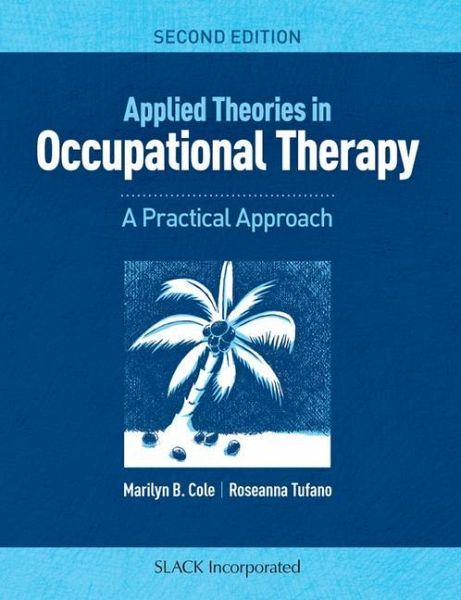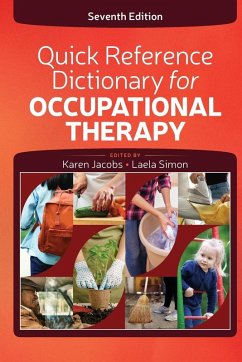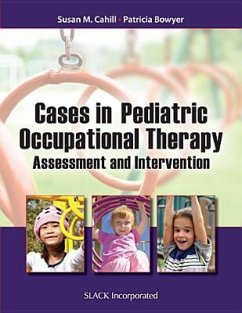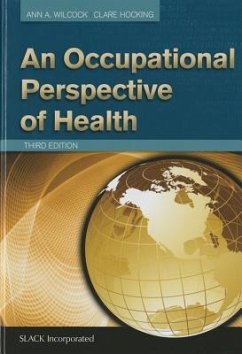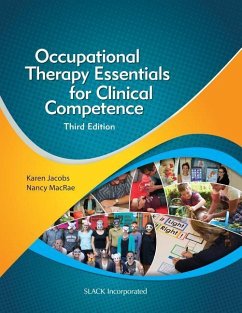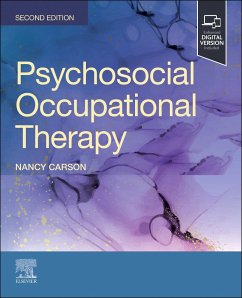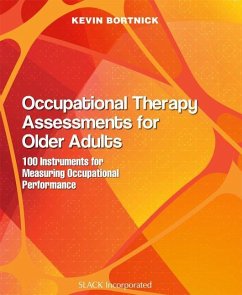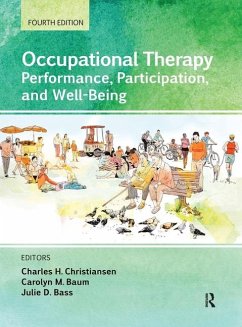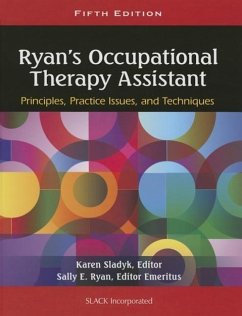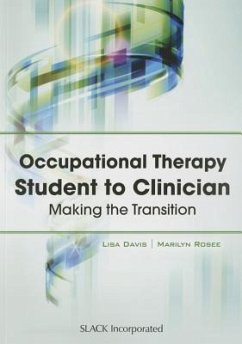Applied Theories in Occupational Therapy
A Practical Approach
Versandkostenfrei!
Versandfertig in 1-2 Wochen
Weitere Ausgaben:

PAYBACK Punkte
54 °P sammeln!




Applied Theories in Occupational Therapy: A Practical Approach, Second Edition provides a system-based, comprehensive overview of the theories, models, and frames of reference that influence occupational therapy around the world.
Marilyn B. (Marli) Cole, MS, OTR/L, FAOTA, is an occupational therapy Professor Emerita at Quinnipiac University in Hamden, Connecticut. She is the author of Group Dynamics in Occupational Therapy, now in its fifth edition (SLACK Incorporated, 2018). Marli also coauthored textbooks on social participation (with Mary Donohue, 2011) and productive aging (with Karen Macdonald, 2015) and coedited Global Perspectives in Professional Reasoning (with Jennifer Creek, 2016), all published by SLACK Incorporated. A graduate of University of Pennsylvania, she practiced for 16 years in mental health, pediatrics, and geriatrics. She holds an advanced certification in sensory integration and has published chapters on theory development, client-centered groups, occupational therapy in retirement, volunteering, end of life, theories of aging, and occupational therapy in the third age (retirement). As an educator, she taught courses in therapeutic use of self, group leadership, frames of reference, psychopathology, geriatrics, group dynamics, evaluation, intervention, health conditions, problem-based learning, and research. As a fieldwork I coordinator, she developed student experiences in the United States, England, Costa Rica, and Australia. In 2011, she guest-edited a special edition of Occupational Therapy International on occupational therapy in the third age. Marli regularly presents at professional conferences, including the American Occupational Therapy Association (AOTA), the World Federation of Occupational Therapy, the Geriatric Society of America (GSA), and the International Positive Psychology Association (IPPA). At home in Stratford, Connecticut or Freeport, Bahamas, Marli and husband Martin Schiraldi enjoy traveling, cruising, sailing, hiking, biking, snorkeling, and fostering rescue dogs. Roseanna Tufano, LMFT, OTR/L, is a Clinical Professor of Occupational Therapy at Quinnipiac University. Since graduating with an occupational therapy degree in 1980, she has worked along a continuum of mental health services. Her teaching career at Quinnipiac University began in 1984, and she has taught courses primarily in occupational therapy theory development, health conditions/psychopathology, group dynamics, clinical reasoning, psychosocial adaptation to physical disorders, and mental health assessments and interventions across the lifespan. She has published several chapters on related topics and has presented locally and nationally for 3 decades. With her advanced degree in family therapy, Roseanna joins her husband Lou in a private practice called Enduring Families conducting individual, couple, marital, and family therapy. She recently served a 6-year term as Chair of the Board for a nonprofit mental health agency. Within the Quinnipiac University community, she advises and engages actively with students and has received several awards. Roseanna has been an invited motivational speaker for various student activities, including the Freshman Address at the University Convocation, where her daughter, Carissa, sat among the incoming class of 2006. Roseanna and Lou enjoy traveling, dancing, and spending family time with adult children Carissa and Brett, who were both married in 2017.
Produktdetails
- Verlag: Taylor & Francis Inc
- 2 ed
- Seitenzahl: 426
- Erscheinungstermin: 3. Dezember 2019
- Englisch
- Abmessung: 280mm x 216mm x 23mm
- Gewicht: 1158g
- ISBN-13: 9781617116360
- ISBN-10: 161711636X
- Artikelnr.: 58670958
Herstellerkennzeichnung
Libri GmbH
Europaallee 1
36244 Bad Hersfeld
gpsr@libri.de
Für dieses Produkt wurde noch keine Bewertung abgegeben. Wir würden uns sehr freuen, wenn du die erste Bewertung schreibst!
Eine Bewertung schreiben
Eine Bewertung schreiben
Andere Kunden interessierten sich für




